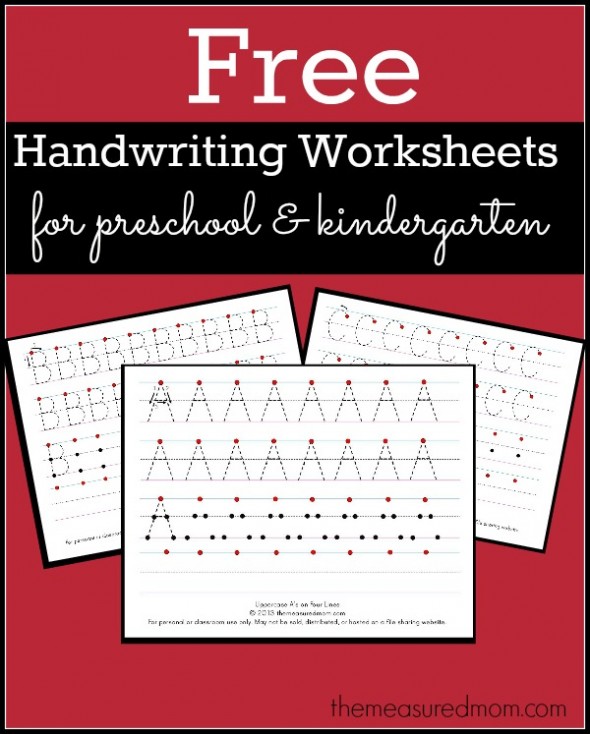A couple of weeks ago I shared a post about teaching writing skills to preschoolers, which was mostly about the fine-motor skills that are needed to learn to write, not so much about the actual mechanics of teaching writing.
This week I saw this post about teaching handwriting from the Measured Mom, which explains how she does it, for example teaching uppercase letters first and starting with those that are easier to form.
The page has links to lots of free worksheets for practicing the different levels of letter formation, but you can also download a full set of more than 330 handwriting worksheets in several different styles for just $5. These are great for practice with little kids or if you have a child who needs practice with forming particular letters later on.
Do you have any tips or resources you love for teaching writing? I’d love to hear about them!
[Photo via the Measured Mom.]
So why is tracing important for my toddler to learn and does it help with handwriting? Yes, it does, Learning to trace teaches your child fine motor skills. Tracing is not only limited to preschoolers, it is suitable for all development ages when learning to write, not matter what the age.
Tracing, when added to your child’s drawing time, helps polish those pre-writing abilities, establishing a solid basis for drawing and emerging writing. Highlights: Tracing helps young children strengthen their pre-writing abilities and lays the groundwork for drawing and writing letters and words.
Looking for more tracing worksheets and activities for your child? Check out these tracing articles. If you are looking for some great worksheets check out these tracing workbooks on Amazon.

 Every year at my daughter’s school I think it’s the second or third graders do an activity where they have to disguise a turkey to keep it from being eaten at Thanksgiving. The kids draw the disguise and write a little bit about why they thing that would be an effective way for the turkey to hide. There were some really creative ideas, including one year one was dressed as an eraser for some reason?
Every year at my daughter’s school I think it’s the second or third graders do an activity where they have to disguise a turkey to keep it from being eaten at Thanksgiving. The kids draw the disguise and write a little bit about why they thing that would be an effective way for the turkey to hide. There were some really creative ideas, including one year one was dressed as an eraser for some reason?
many children are taught from a really young age to recognize letters but not necessarily how to write them because, for the most part, they’ll use keyboards. Cursive along with calligraphy will only be art forms. kind of sad…the days of a written letter, or a document as beautiful as The Declaration of Independence…. Will be rare. So sad.